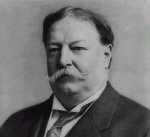We’re getting well off topic, but ok… again no you need no separate bias at all to arrange the domains sufficiently to imprint an intelligible signal… albeit a very poor, distorted one. In fact, high frequency content within audible range will contribute bias all by itself. For this very reason some bright individual at Dolby Labs came up with HX Pro to compensate. Yes, you are correct that the earliest biasing method was DC, but before that there was no dedicated bias circuit. The point being you need no bias at all to alter the magnetic particles on a tape, or in this case to damage prerecorded material.You are correct that magnetic tape resists rearranging of the domains, but it is a far leap to say a stray magnetic field will have no effect at all, which is what you seem to be saying.
Are you saying that tape needs such a high level of biasing to record and therefore residual magnetism would not be strong enough to have an impact? That's what I'm getting.
I don’t really know what the prevailing thought was at TASCAM in the 80’s, but in every language; in every country, in small and large studios alike, whether TV, radio or music, tape handling and magnetic fields have always been an issue. Whether that is tape path maintenance or speaker/tape proximity it’s certainly one of the first things I learned as a teenage Audio/Video apprentice working in TV. We’re talking broad industry best practices here. Anecdotal evidence to the contrary is statistically insignificant.
For example, you won’t hear me saying something like “I had a TASCAM 32 for 20 years and it never needed degaussing, and I stored my tapes on top of my speakers.” Even if that were true it would be a fluke and completely contrary to the experience of thousands of recording professionals around the world over the last 50 years.
So, I tend to speak statistically when considering what recommendations I should make to members of this forum.
I think we certainly have different ideas of what we’re trying to accomplish. You have given the example of the micro-cassette with the permanent magnet erase head. Well, that is perfectly fine considering those devices are optimized for speech recording… maybe 5kHz or less depending on the model.
We’re primarily concerned with hi-fidelity music recording when discussing something like the R8. The same residual magnetism that will erase frequencies in the 12 kHz to 20 kHz range will have no audible impact on a micro-cassette voice recorder, and you won’t see a permanent magnet erase head on a half-track mastering deck.
The bottom line for the recording musician is that your high frequencies are vulnerable to stray magnetic fields from various sources, and it’s something you should be mindful of.
Does that make sense? It does to the preservationists and archivists of the world. If you’re just screwing around and don’t care what the tape you made today sounds like this time next year then by all means have fun and don’t give it another thought. But if you’re in it for the long term consider these statements form the Texas Commission on the Arts (I could have picked a thousand other organizations to quote basically the same thing (in several languages ), but this was handy)
“A tape's signal (the information carrier) is represented on a tape by the arrangement of the magnetic particles into a particular pattern. Strong magnetic fields can affect the signal on a tape, causing it to become unreadable or adding to errors in playback. Common mistakes include leaving tapes on top of, or next to, a television, computer monitor, speaker, or microphone. Motors, transformers, generators, and industrial cleaning equipment are other devices that can cause demagnetization if a tape is within close proximity.”
See McKnight’s papers on the subject… the first includes a simple test to determine if your tape path is slowly erasing your tape, starting with the high frequencies.
http://home.flash.net/~mrltapes/mcknight_demag.pdf
http://home.flash.net/~mrltapes/f...ial-erasure.pdf







 ). So, we would all do well to spend our precious time verifying our tapes are in a safe environment.
). So, we would all do well to spend our precious time verifying our tapes are in a safe environment. 


